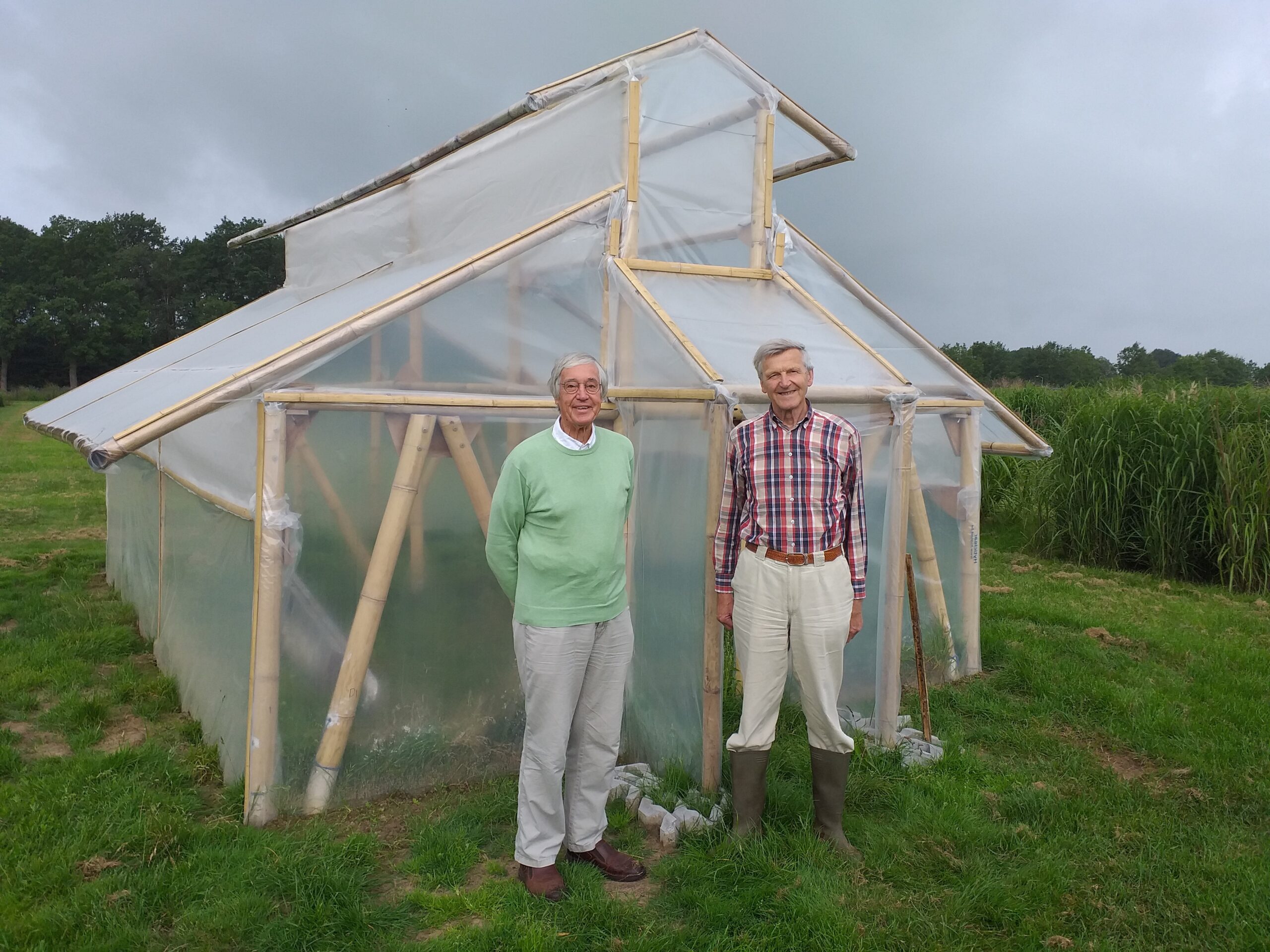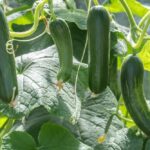Gerard Bot and Martien Beek, both aged 76, built a greenhouse out of bamboo on Wageningen Campus. The erstwhile WUR employees – Bot is a retired professor of applied physics and an expert on greenhouse climate, while Beek is an expert in plant breeding and crop protection – aim to develop a greenhouse that is suitable for Nepal. The prototype cannot be constructed in Nepal due to the corona crisis, which is why they have set up shop in Wageningen.
Martien Beek has been advising horticulturists in Nepal on how to increase their production since 2014. First, he paired the Nepalese company N-Agro with the Dutch Enza Zaden business, providing the Nepalese horticulturists with access to better vegetable seeds. Following that, he addressed the abundant use of pesticides and introduced Integrated Pest Management (organic plague management). When Beek and Bot facilitated a two-week horticulture course in Nepal in 2019, they encountered a third issue. The plastic greenhouses from India that many Nepalese horticulturists use became far too hot. They were unable to manage the greenhouse climate properly.
Wind
‘The Indian greenhouses, like those constructed in the Netherlands, use ventilation through the wind’, Bot explains. ‘In Nepal, however, there is very little wind, which is why this type of ventilation does not work there. In a climate such as this, a greenhouse must be constructed like a chimney, allowing cool air to enter through the sides while warm air can escape through the roof. We already had some experience in this type of construction at the WUR Greenhouse group in India and Thailand.’ An added issue: they wanted to use bamboo for the construction, as this is the cheapest available construction material in Nepal. They sketched a greenhouse of 30 metres in length, 8 metres wide and 6 metres high.
Bamboo
The design was subsequently made by two students from the TU Eindhoven. They determined what type of bamboo is strong enough, how best to attach the bamboo poles, what foundation to use and how the plastic and ventilation fabric can best be stretched over the framework.
This yielded the prototype Beek (left) and Bot (right) are now standing in front of. WUR-Greenhouse Horticulture calculated whether the bamboo greenhouse provides sufficient ventilation. The answer is: yes. WUR also calculated the potential yield of tomatoes and bell peppers in this greenhouse. Beek: ‘The Nepalese horticulturists now obtain 5 kilos of tomatoes per square metre of greenhouse. Theoretically, this bamboo greenhouse has the capacity to produce 35 kilos per square metre, but we are more than happy with 20 kilos, free from pesticides.’
Construction
The prototype that has now been erected on the campus will not achieve a yield this high. The greenhouse is only 4 metres wide and 3 metres high, and thus half the size of the intended model. Moreover, it will not contain any tomato plants. The model is meant to test the design and construction. Bot: ‘We want to see if it will break. We hope for a heavy storm, similar to the ones you may see in Nepal during the rainy season.’ The real greenhouse is to be constructed in the valley near the Nepalese capital Kathmandu next year, where local experts may help improve it.
The project cost the retirees many hours of work and some 3000 euros in construction materials. WUR reimbursed them for the materials. They are enthusiastic about the support they received from Unifarm. Many businesses have also contributed to the endeavour and will remain involved in the developments. Koppert, for example, studies the use of organic pesticides, while the plastic and ventilation fabric were donated by Hyplast and Ludwig Svensson. Development organisation Agriterra and the Nepalese government are involved in investigating how this greenhouse may help improve the Nepalese food supply.

 Photo: Albert Sikkema
Photo: Albert Sikkema 

